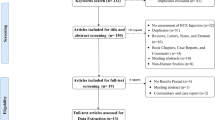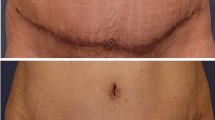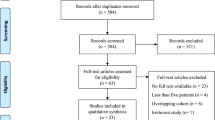Abstract
Background
Breast prosthesis implants have been safely and efficiently used in the plastic surgery department. With the increasing demand for aesthetics, these silicon implants were not only used in breast augmentation surgery but also in breast reconstruction after mastectomy. Nevertheless, breast prosthesis implantation brings a lot of complications, such as: postoperative chronic pain, capsule contracture, prosthesis displacement and prosthesis rupture and infection in severe cases. From the year 1998, botulinum toxin A (BTX-A), a neurotoxin, has been reported to be effective for pain control, capsule contracture lessening, expander enlargement and so on. However, those articles included all kinds of study types: randomized, double-blinded controlled trial (RCT), nonrandomized trial, retrospective analysis and case series, besides the outcomes were varied. To clarify how BTX-A acts at the mammaplasty field, we made this systematic review and meta-analysis.
Purpose
To review how BTX-A acts in the field of mammaplasty as well as discuss the relative mechanisms of BTX-A and the related research progress.
Methods
We searched Pubmed, Embase, Cochrane, Web of science, Clinical trials, Wanfang Database and VIP from inception until March 2018 for papers reporting the use of BTX-A in the breast surgery using implants deep within the pectoralis major muscle. System review, viewpoints and case reports were excluded.
Results
Ten articles met the criteria for inclusion including six prospective controlled (2 RCT; 4 other trails), three retrospective cohorts and one case series. These studies were all about patients using BTX-A during or after breast surgery with expanders or prostheses. A total of 682 patients were enrolled, 543 (79.61%) accepted BTX-A injection, 185 underwent mastectomies with immediate reconstruction, 13 with delayed reconstruction, 295 mastectomies with either immediate or delayed reconstruction and 189 with breast augmentation using silicone prostheses. The study time ranging from 4 months to 13 years, 15 patients (2.76%) received BTX-A injection more than two times, 9.2% received less than 75 U BTX-A, 34.3% 75–100 U, 0.18% 250 U, and in 56.4% the dosage was not stated. No complications associated with BTX-A were mentioned, almost all the studies reported efficacy for pain control. Other assessments included increased speed of expander enlargement and volume were mentioned in four papers, two articles analyzed the visual analogue scores, three suggested relief of capsular contracture, two reported lower narcotic use, three mentioned shorter hospital stays and one proved lowering the rate of unplanned expander. It seems all the studies demonstrate the valid usage of BTX-A, but the quality of this evidence still under the line.
Conclusion
We could try to use BTX-A as a new method in the field of mammaplasty. There are so many advantages such as postoperative pain relief, reducing the hospital stay, and increasing operation success rate, but rigorous methodological evidence is still lacking. A lot of studies were retrospective, only two studies used the RCT method. Therefore, to obtain strong evidence to clarify the usage of BTX-A, more randomized double-blinded controlled trials will be required, meanwhile the mechanism study adds to the evidence.
Level of Evidence III
This journal requires that authors assign a level of evidence to each article. For a full description of these evidence-based medicine ratings, please refer to the Table of Contents or the online Instructions to Authors www.springer.com/00266.


Similar content being viewed by others
References
Siegel RL, Miller KD, Jemal A (2017) Cancer statistics, 2017. CA Cancer J Clin 67(1):7–30
Cemal Y, Albornoz CR, Disa JJ, McCarthy CM, Mehrara BJ, Pusic AL et al (2013) A paradigm shift in U.S. breast reconstruction: part 2. The influence of changing mastectomy patterns on reconstructive rate and method. Plast Reconstr Surg 131(3):320e–326e
Basta MN, Gerety PA, Serletti JM, Kovach SJ, Fischer JP (2015) A systematic review and head-to-head meta-analysis of outcomes following direct-to-implant versus conventional two-stage implant reconstruction. Plast Reconstr Surg 136(6):1135–1144
Dassoulas KR, Wang J, Thuman J, Ndem I, Schaeffer C, Stovall M et al (2018) Reducing infection rates in implant-based breast reconstruction: impact of an evidence-based protocol. Ann Plast Surg 80:493–499
Fischer JP, Wes AM, Nelson JA, Basta M, Rohrbach JI, Wu LC et al (2014) Propensity-matched, longitudinal outcomes analysis of complications and cost: comparing abdominal free flaps and implant-based breast reconstruction. J Am Coll Surg 219(2):303–312
Malahias M, Jordan DJ, Hughes LC, Hindocha S, Juma A (2016) A literature review and summary of capsular contracture: an ongoing challenge to breast surgeons and their patients. Int J Surg Open 3(C):1–7
Schwartz MS, Wren DR, Filshie J (1998) Neuromyotonia in a muscle flap producing a convulsing breast: successful treatment with botulinum toxin. Mov Disord Off J Mov Disord Soc 13(1):188–190
Winocour S, Murad MH, Bidgoli-Moghaddam M, Jacobson SR, Bite U, Saint-Cyr M et al (2014) A systematic review of the use of Botulinum toxin type A with subpectoral breast implants. J Plast Reconstr Aesthet Surg JPRAS 67(1):34–41
Lo KK, Aycock JK (2015) A blinded randomized controlled trial to evaluate the use of botulinum toxin for pain control in breast reconstruction with tissue expanders. Ann Plast Surg 74(3):281–283
Gabriel A, Champaneria MC, Maxwell GP (2015) The efficacy of botulinum toxin A in post-mastectomy breast reconstruction: a pilot study. Aesthet Surg J 35(4):402–409
Layeeque R, Hochberg J, Siegel E, Kunkel K, Kepple J, Henry-Tillman RS et al (2004) Botulinum toxin infiltration for pain control after mastectomy and expander reconstruction. Ann Surg 240(4):608–613 (discussion 13-4)
Figus A, Mazzocchi M, Dessy LA, Curinga G, Scuderi N (2009) Treatment of muscular contraction deformities with botulinum toxin type A after latissimus dorsi flap and sub-pectoral implant breast reconstruction. J Plast Reconstr Aesthet Surg JPRAS 62(7):869–875
Boneti C, Yuen J, Santiago C, Diaz Z, Robertson Y, Korourian S et al (2011) Oncologic safety of nipple skin-sparing or total skin-sparing mastectomies with immediate reconstruction. J Am Coll Surg 212(4):686–693 (discussion 93-5)
Margulies AG, Hochberg J, Kepple J, Henry-Tillman RS, Westbrook K, Klimberg VS (2005) Total skin-sparing mastectomy without preservation of the nipple-areola complex. Am J Surg 190(6):907–912
Xiao Z (2009) Effect of botulinum toxin type A on the capsule around a subpectoral implant for breast augmentation. Aesthet Plast Surg 33(5):782–783
Rohrich RJ, Pessa JE (2009) Nasal anatomy and John B. Deaver, M.D. Plast Reconstr Surg 124(5):253e–254e
王跃星, 刘庆阳, 王嵘, 潘舒亚, 杨洪波, 叶丽萍, et al. A型肉毒毒素胸大肌注射对缓解假体隆乳术后疼痛的疗效观察. 中国美容医学杂志. 2012;21(1):7–9
赵娜, 黎冻, 周翔, 莫海燕, 韦洁, 王琪海. A型肉毒素肌注胸大肌对硅凝胶假体隆乳术形态影响的临床研究. 中国美容医学杂志. 2013;22(14):1469–1471
O’Donnell CJ (2011) Pectoral muscle spasms after mastectomy successfully treated with botulinum toxin injections. PM R 3(8):781–782
Brown A (1994) Meta-analysis, decision analysis and cost-effectiveness analysis: methods for quantitative synthesis in medicine. Oxford University Press, Oxford, pp 1601–1602
Lau J, Ioannidis JPA, Schmid CH (1997) Quantitative synthesis in systematic reviews. Ann Intern Med 127(9):820–826
Singh N, Picha GJ, Hardas B, Schumacher A, Murphy DK (2017) Five-year safety data for more than 55,000 subjects following breast implantation: comparison of rare adverse event rates with silicone implants versus national norms and saline implants. Plast Reconstr Surg 140(4):666–679
Caterson SA, Orgill DP (2014) Discussion: natrelle round silicone breast implants: core study results at 10 years. Plast Reconstr Surg 133(6):1362–1363
Browne JP, Jeevan R, Gulliver-Clarke C, Pereira J, Caddy CM, van der Meulen JHP (2017) The association between complications and quality of life after mastectomy and breast reconstruction for breast cancer. Cancer 123(18):3460–3467
Teitelbaum S (2012) Commentary on: pain control following breast augmentation: a qualitative systematic review. Aesthet Surg J 32(8):964–972
Butz DR, Shenaq DS, Rundell VL, Kepler B, Liederbach E, Thiel J et al (2015) Postoperative pain and length of stay lowered by use of exparel in immediate, implant-based breast reconstruction. Plast Reconstr Surg Glob Open 3(5):391e
Al Sufyani MA, Al Hargan AH, Al Shammari NA, Al Sufyani MA (2016) Autologous fat transfer for breast augmentation: a review. Dermatologic Surg Off Publ for Am Soc Dermatol Surg [et al] 42(11):1235–1242
Nava MB, Rancati A, Angrigiani C, Catanuto G, Rocco N (2017) How to prevent complications in breast augmentation. Gland Surg 6(2):210–217
Larsson IM, Ahm Sorensen J, Bille C (2017) The post-mastectomy pain syndrome—a systematic review of the treatment modalities. Breast J 23(3):338–343
Dessy LA, Maruccia M, Mazzocchi M, Scuderi N (2014) Treatment of post mastectomy pain syndrome after mastopexy with botulinum toxin. J Plast Reconstr Aesthet Surg JPRAS 67(6):873–874
Cattin T, Govender S (2005) Botulinum toxin for tethering of breast implant. Plast Reconstr Surg 116(2):686–688
Wan D, Rohrich RJ (2016) Revisiting the management of capsular contracture in breast augmentation: a systematic review. Plast Reconstr Surg 137(3):826–841
Tamboto H, Vickery K, Deva AK (2010) Subclinical (biofilm) infection causes capsular contracture in a porcine model following augmentation mammaplasty. Plast Reconstr Surg 126(3):835–842
Ajdic D, Zoghbi Y, Gerth D, Panthaki ZJ, Thaller S (2016) Editor’s choice: the relationship of bacterial biofilms and capsular contracture in breast implants. Aesthet Surg J 36(3):297–309
Tan KT, Wijeratne D, Shih B, Baildam AD, Bayat A (2010) Tumour necrosis factor-α expression is associated with increased severity of periprosthetic breast capsular contracture. Eur Surg Res 45(3–4):327–332
Abraham DJ, Shiwen X, Black CM, Sa S, Xu Y, Leask A (2000) Tumor necrosis factor alpha suppresses the induction of connective tissue growth factor by transforming growth factor-beta in normal and scleroderma fibroblasts. J Biol Chem 275(20):15220–15225
Kuhn A, Singh S, Smith PD, Ko F, Falcone R, Lyle WG et al (2000) Periprosthetic breast capsules contain the fibrogenic cytokines TGF-beta1 and TGF-beta2, suggesting possible new treatment approaches. Ann Plast Surg 44(4):387–391
Verrecchia F, Pessah M, Atfi A, Mauviel A (2000) Tumor necrosis factor-alpha inhibits transforming growth factor-beta/Smad signaling in human dermal fibroblasts via AP-1 activation. J Biol Chem 275(39):30226–30231
Gancedo M, Ruiz-Corro L, Salazar-Montes A, Rincón AR, Armendáriz-Borunda J (2008) Pirfenidone prevents capsular contracture after mammary implantation. Aesthet Plast Surg 32(1):32–40
Bastos EM, Sabino NM, Garcia EB, Veiga DF, Han YA, Denadai R et al (2012) Effect of zafirlukast on capsular contracture around silicone implants in rats. Acta Cir Bras 27(1):1–6
Chung KJ, Park KR, Lee JH, Kim TG, Kim YH (2016) Simvastatin reduces capsular fibrosis around silicone implants. J Korean Med Sci 31(8):1273–1278
Segreto F, Carotti S, Tosi D, Pendolino AL, Marangi GF, Morini S et al (2016) Toll-like receptor 4 expression in human breast implant capsules: localization and correlation with estrogen receptors. Plast Reconstr Surg 137(3):792–798
Kim S, Ahn M, Piao Y, Ha Y, Choi DK, Yi MH, Shin N, Kim DW, Oh SH (2016) Effect of botulinum toxin type A on TGF-beta/Smad pathway signaling: implications for silicone-induced capsule formation. Plast Reconstr Surg 138(5):821e–829e
Lee SD, Yi MH, Kim DW, Lee Y, Choi Y, Oh SH (2016) The effect of botulinum neurotoxin type A on capsule formation around silicone implants: the in vivo and in vitro study. Int Wound J 13(1):65–71
Montecucco C, Molgó J (2005) Botulinal neurotoxins: revival of an old killer. Curr Opin Pharmacol 5(3):274–279
陈颖, 陈嘉健, 陈嘉莹, 杨犇龙, 李琳, 黄晓燕, et al. 中国乳腺癌术后乳房重建现况调查报告. 中华肿瘤杂志. 2014; 36(11):851–7
曾毅. 中国乳腺癌患者拒绝乳房再造的原因分析. 医学美学美容旬刊. 2015(1):494
Wolfram D, Dolores W, Rainer C, Christian R, Niederegger H, Harald N, Piza H, Wick G (2004) Cellular and molecular composition of fibrous capsules formed around silicone breast implants with special focus on local immune reactions. J Autoimmun 23(1):81–91
Kim JB, Jeon HJ, Lee JW, Choi KY, Chung HY, Cho BC, Park SH, Park MH, Bae JS, Yang JD (2018) A murine model of radiation-induced capsule-tissue reactions around smooth silicone implants. J Plast Surg Hand Surg 52(4):217–224
Kim YS, Hong JW, Yoon JH, Hwang YS, Roh TS, Rah DK (2015) Botulinum toxin A affects early capsule formation around silicone implants in a rat model. Ann Plast Surg 74(4):488–495
Acknowledgements
Funding was provided by National Nature Science Foundation of China (Grant No. 81503578).
Author information
Authors and Affiliations
Contributions
TL contributed to the literature review, data collection and analysis and drafting of this manuscript. YL contributed to the literature review, data collection and analysis. WZ contributed to the critical revisions of the manuscript, data interpretation and provided scientific advice. All authors have read and approved the final manuscript.
Corresponding author
Ethics declarations
Conflict of interest
The authors declare that they have no conflict of interest.
Rights and permissions
About this article
Cite this article
Li, T., Liu, Y. & Zhang, W. Botulinum Toxin A Plays an Important Role in the Placement of Implants Deep Within the Pectoralis Major Muscle for Mammaplasty: A Systematic Review and Meta-analysis. Aesth Plast Surg 42, 1519–1530 (2018). https://doi.org/10.1007/s00266-018-1203-1
Received:
Accepted:
Published:
Issue Date:
DOI: https://doi.org/10.1007/s00266-018-1203-1




